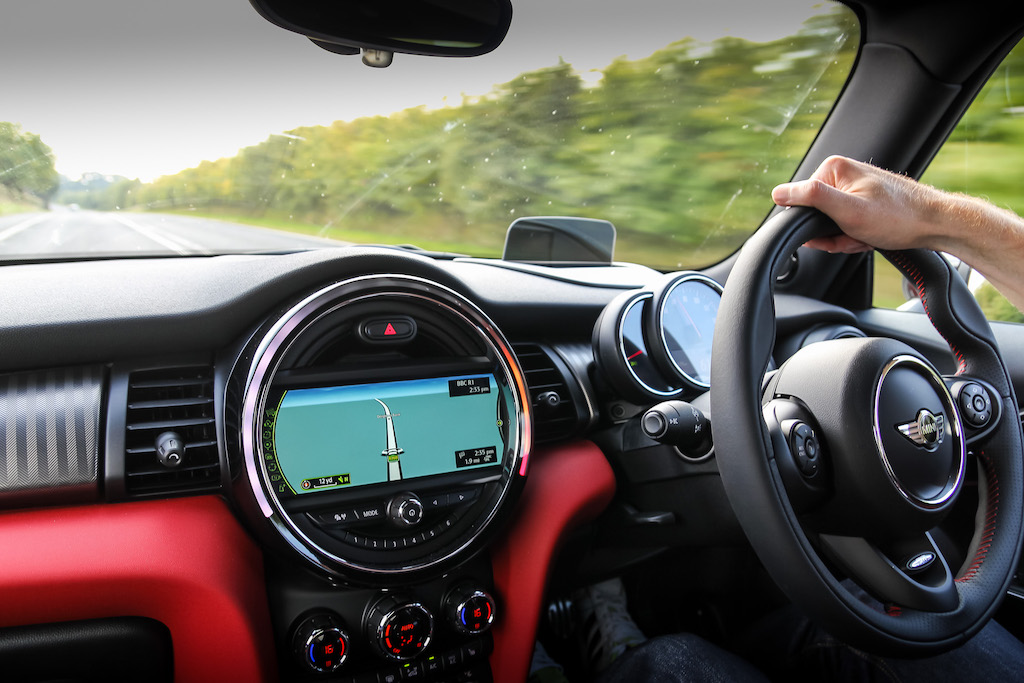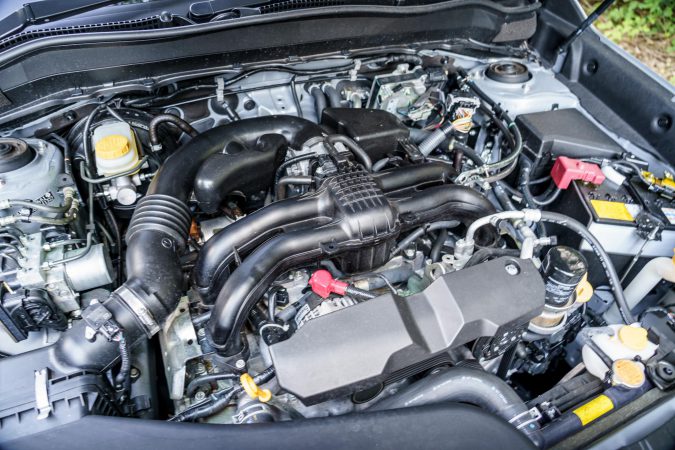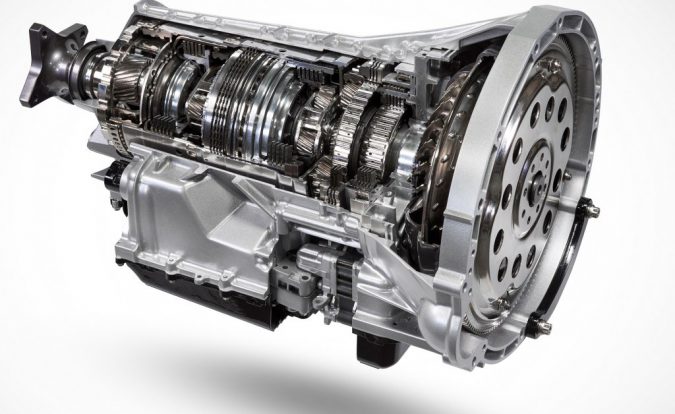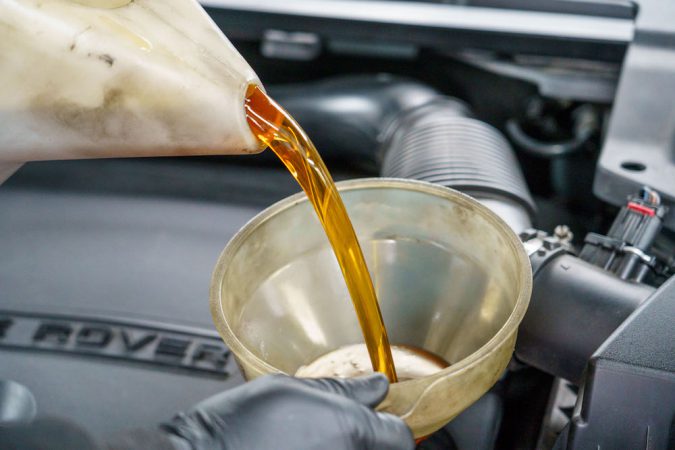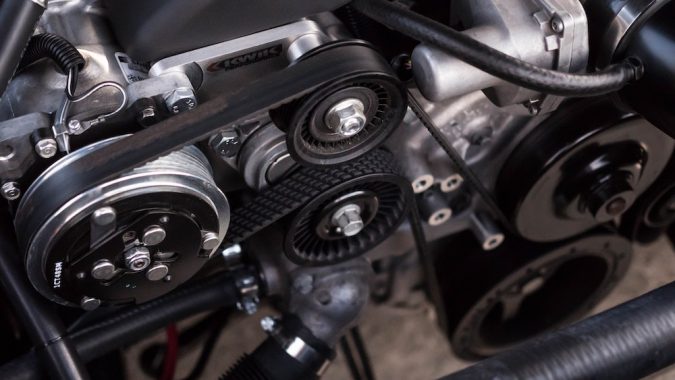Your car is your pride and joy. You like to feel it is a trustworthy part of your life and that at any moment it could get you from A to B. However, sometimes things go wrong and cars start making strange noises. If your car has started to make a whining noise when accelerating, there are a few things you need to check.
In this article, we will go through the initial steps that should be taken if your car starts making a whining noise when accelerating. It could be faulty power steering. Maybe it’s a transmission issue. It could be any number of other things. Read on to find out how to check.
- Identifying A New Noise
- Visual Inspections
- Transmission
- Engine
- Wheel Bearing
- Power Steering
- Conclusion
Locating The New Whining Noise When Accelerating
Cars make noise. We know that. When you have owned a car for a while you start to get accustomed to these noises. It means your brain can switch off and allow you to relax while driving. However, at some point, a new noise will appear. And you will notice it. Identifying a new noise is the first step to resolving the issue that might be causing it.
There are a few key points to check off when first identifying a new noise when accelerating. The most key is where the noise is coming from. You will need to make a note of when specifically the noise occurs. You will also need to note when it stops.
If the car makes a whining noise when accelerating, it is worth checking a number of things. Does this happen at high or low revs? Is the noise occurring when turning the steering wheel? Does the noise only occur in certain types of weather, for example, cold or wet weather?
If you can diagnose where a noise is coming from then it is remarkably easier to find out what the issue is. For example, if you do notice that the noise is most prevalent when you are turning the steering wheel, it could be an issue with your power steering. You could even record the sound to listen to after. Once you notice the noise and are aiming to figure out where it is from, the next step is a visual inspection.
Visual Inspections
Performing a visual inspection for a whining noise when accelerating is the next best thing to do. It is a good idea to perform visual inspections whenever your car is acting unexpectedly. Visual inspections can build on the earlier work you have done with your auditory ones.
The best place to do a visual inspection is at home. This enables you to safely perform these checks in an environment you are comfortable with. If you are ever in the situation that you are driving and this noise accompanies a further problem, say smoke from the engine or other irregularities, it is advised that you pull over when it is safe to do so. This will help you reduce the effects on your engine.
Once in a safe place and your engine has cooled, you are ready to perform your visual inspection. To be most effective you will need something to lie on and a torch. If possible, grab an extra pair of hands to help.
Where To Check
- You will want to check under the car. You may have driven over something and it has got stuck underneath your car. This could cause any number of sounds. You are best to check directly under your car.
- You will need to check the tires, wheels, and wheel wells for the same reason. If anything is stuck in these, it could cause a lot of noise.
- Pop the hood and check to see if anything catches your eye immediately. It may be that something is out of place or it looks like there is fluid leaking.
- Make sure the engine is cool and then feel around for any loose parts. These could be belts, hoses, housing, or fans.
- Take a look at the belts in the engine. Do any of them look worn or old?
- Make sure the car is in park and then turn the engine on. Take a look back in the engine. Check to see if there is anything that has moved since the engine was off.
- Ask someone to sit in the car and slowly press the gas. Listen for any peculiar sounds and take a look to see if anything is happening in the engine.
- Close the hood and take the car for a short drive. Ask someone on the side of the road to listen as you drive past, they may be able to pinpoint where the sound is coming from.
After the inspection, make a note of anything that you noticed that was out of the ordinary. You can search these online or mention them to a mechanic. Once you have performed both a visual and auditory check, you may have a better idea of where the issue lies. Read on to find out what some possible issues are, and how to fix them.
Transmission Issues
Whining noise when accelerating could be a transmission issue. A car transmission is a bridge between a car’s engine and its wheels. This means that for every mile the car does, the transmission does it too. This is why you will find that transmissions are the first thing to fail on many aging cars.
Another downfall of transmission failure is that you can’t see it. Other than potentially a fluid leak, in which case you will have a dark red patch on your driveway.
Fluids
The first thing to check for a transmission issue is your fluid levels. If this is lower than it should be then you may have found the origin of the noise. The transmission. To resolve this, top your transmission fluid reservoir up and then go for a drive.
Pay attention to the gears changing and how the overall ride feels. You are best doing this on a smooth road, to avoid mistaking road noise and drivetrain noise. Shift quickly, but safely, through the gears and take note of any differences. Listen as you stop your car.
If this does resolve your issue, it is worth keeping an eye on your transmission fluid levels for a period of time. For them to get to a low level in the first place suggests a leak in the system. As mentioned earlier, if there is a leak you will notice a red fluid underneath where your car has been parked.
Other Transmission Issues
If your fluids are at the right level, or you have topped them up, and the whining noise when accelerating is still present, the issue may still be in the transmission. It could be that the gears are beginning to wear down. It is difficult to determine this without breaking open the transmission and taking a look. For this, we recommend contacting a mechanic and asking them to quote for this.
Moreover, a failing torque converter could be the issue here. This can also make a whining sound. The torque converter essentially transfers power from the engine to the transmission. In an automatic, the torque converter links the source of power to the load. If a torque converter’s internal bearings begin to wear it can make a roaring sound, which can sound like a whining noise when accelerating.
What’s The Cost Of Repair?
Pinpointing the cost of any repair is difficult. As in all cases, it will depend on the competency of your mechanic and how competitive their pricing is. However, you can normally estimate depending on the type of work that is required.
A strange noise from a vehicle’s transmission is normally indicative of a serious issue. There are few cases where this will not require the need to remove the vehicle’s transmission. A cost of at least $1,000 is normally attributed to work like this. This is mainly due to a high labor price. If the issue is found to be an internal bearing, the cost can become considerably more expensive.
Engine Problems
After you have ruled out the transmission. The next area that this issue could lie in is the engine itself. The average internal combustion engine has over 1,000 parts. However, with some simple checks, you can troubleshoot whether the issue lies in the engine.
With the vehicle in neutral, press down lightly on the gas. If the strange sound starts and is the same as the whining noise when accelerating, then you could have engine problems. If the car sounds healthy, the issue is most likely further down the drivetrain. Whether that is in the transmission. Or in the wheels.
If the noise is present while in neutral, then it could be any number of engine issues. Read on to find out what some of these issues could be and how to fix them.
Fluids
Similar to transmissions, internal combustion engines have to be topped up with fluids in order to work at their best. A lack of lubrication can cause increased friction at best or complete engine failure at worst. More friction will result in more energy being transferred into sound and could be the source of the whining noise when accelerating. For this reason, it is important to make sure your engine oil is at a suitable level.
To fill up your engine oil, you will need to locate your oil filler cap. First, find the oil level using the dipstick. Then find the oil filler cap. Topping up your car oil can help prevent your car from suffering major engine damage.
Bearing Faults of Belt-Driven Parts
You could be experiencing a whining noise when accelerating due to one of the components within the engine that is belt-driven. Every car has a number of these, that could have a fault if not looked after properly. Each mechanism consists of a drive pulley and one set (or more) of bearings. All of which, in modern cars at least, is driven by a single serpentine belt.
The belt for these accessories transfers force from the engine to the pulleys associated with each belt-driven accessory. There are many of these in an engine, including the power-steering pump, the air conditioning compressor, the water pump, and the alternator.
If the bearings within any of the above start to fail, the whining noise becomes apparent. Bad bearings are especially common in alternators. Sometimes, the sound can become so bad that it can be heard clearly over the engine.
It is important, with belt-driven devices, that you get any issues seen right away. Faulty components can end in much worse issues if not seen in a timely manner. For example, you could end up with locked-up bearings leading to a shredded belt.
As mentioned earlier, a lot of modern vehicles using belt-driven accessories only have a single belt. In this case, a locked-up belt can render the rest of the belt-driven accessories functionally useless. As without the belt moving to drive their pulley, they have no power.
Deficient Serpentine Belt
The serpentine belt is the belt that helps run all of the components mentioned above. For this to be most efficient, it needs to be working at full proficiency. Following thousands of miles of driving, a vehicle’s serpentine belt can become deficient. This can mean it is anywhere from dry and cracked, to slipping off its pulleys.
If this happens, the belt with not transfer energy as efficiently to the pulleys within these components. This can only gradually get worse. As a serpentine belt slowly slips out of place onto the edge of the pulleys, it can increase the friction with the pulleys. This can result in a sound that might be similar to your whining noise when accelerating.
A squealing serpentine belt is not much more than an annoying sound that you will have to put up with during your commute. It won’t often lead to bigger issues if not addressed when noticed. However, whilst not a major issue, a slipping serpentine belt can become more damaged due to being in a less than optimal position.
A damaged belt can snap or slip completely off its pulleys. If this happens all your belt-driven devices will stop working and you will be stuck. If you do notice that your serpentine belt is looking tired, it is worth giving your mechanic a call and getting a new one fitted. This can be a fairly wallet-kind process. Especially when compared to some of the other things on this list.
Worn Wheel Bearing Noise
Wheel bearings are a part of the wheel that allows your vehicle’s wheels to spin freely as you go along with your journey. These are essentially two steel rings encased in a metal ball. These are often within a central hub. Wheel bearings come in all sizes. Anything that has wheels uses them. From skateboards to elevators. They help wheels spin with very little friction, both improving efficiency and drive noise.
If the bearings within this central hub begin to wear, the whole hub would require replacing. In vehicles that do not use a hub of bearings, older cars, for example, it is possible to change individual bearings. Although these bearings are usually made of steel they are still susceptible to wear and will wear over time.
A wheel bearing will perform less efficiently when worn. Due to an increase in friction, a sound will be heard coming from the wheel where the bearing is located. The sound you hear while driving is often referred to as a roaring noise. It can be mistaken for loud road noise, in some cases. The pitch of the noise will change while accelerating, due to the change in the wheel speed. This could be the whining noise you hear when accelerating.
Another way to spot a worn wheel bearing is when turning. The sound from a worn wheel bearing can change or even disappear while steering. Read on to find out what you should do if you think your whining noise when accelerating is due to a worn wheel bearing. It might be time to find wheel bearing repair shops near me.
What’s The Fix?
A damaged or worn wheel bearing should be replaced immediately. If you fail to replace worn wheel bearings, they will naturally become more worn and the sound you are experiencing will get louder. Reaching total failure, the wheel bearings can become separated from the hub. If this happens then you could cause great damage to the whole wheel-end.
When getting your worn wheel bearings replaced, you will be looking to spend between $400 – $1,000. This cost will change from car to car. These costs are composed of around $100-$300 worth of parts and $300-$600 on labor. Once again, this will depend on your mechanic and their pricing. To find out how to locate the best mechanic, click here.
Power Steering Issues
The power steering in your car helps you turn corners without exerting too many calories. It essentially makes steering easier for you by assisting with the steering effort you are putting in. This all happens using a whole host of mechanisms. The whining noise when accelerating could be caused by any one of the parts are failing or haven’t been serviced properly. You can notice an issue with the power steering if you hear a squealing noise when turning, vibrations on the steering wheel, or using more effort than normal to turn your car.
There are a number of things that could be at fault with your power steering. Read on to find out what these issues are and how you can rectify them.
Fluids
Fluids come up a few times in this article. It’s no wonder why when you think about how many components in any vehicle rely on fluids to work properly. The power steering system is no different. Your power steering reservoir will usually be found on the passenger’s side of the vehicle, under the hood. You will need to check the level of this fluid and fill it up appropriately.
Once you have done this, take your car for a drive and listen out for any changes. Listen out for when you turn at both high and low speeds. If the whining noise when accelerating is no longer present, we advise keeping an eye on your fluid levels for a while. You may find these drop quickly, in which case you probably have a leak.
If you do suspect you have a leak you will be finding red patches on your driveway, or wherever you have parked your car. In this case, you can use a stop-leak additive for small leaks, or you may have to have components changed for bigger leaks.
Loose Belt
On older cars, you can commonly across engines that have separate power steering belts and alternator belts. While in newer cars both have been replaced by the aforementioned serpentine belt. If your car does have a separate power steering belt then this could be causing the sound. Most of the time this belt has become loose and just needs tightening. However, in other circumstances, this belt can wear and would require replacement.
Facts: Dealing with a Whining Noise When Accelerating in a Car
- A car that makes a whining noise when accelerating may have worn-out components due to frequent use over time, and finding the root cause of the noise can be challenging.
- Possible causes of a whining noise during acceleration include issues with the transmission, such as low transmission fluid level or worn-out gears, and faulty steering, such as a loose steering belt.
- A leak in the power steering system can also cause a whining noise, and this can be fixed by replacing the damaged or leaked parts and refilling the fluid, or by adding a liquid stop-leak solution to the reservoir.
- A rising noise in the car may indicate an engine problem, and it is best to consult a mechanic for diagnosis. However, it is important to ensure that the trouble is with the engine and not with the transmission.
- In a manual car, a whining sound may indicate a problem with the clutch components, such as a damaged release bearing or pilot bearing, and in an automatic car, it may be a problem with the torque converter.
- Checking the engine oil level is essential, as a low level of fluid is the main reason for causing a whining noise when accelerating.
- Spotting and diagnosing the problem early on can save the car from severe engine damage and prevent the need for expensive repairs down the road.
Conclusion
The severity of a whining noise when accelerating will largely depend on the type of issue that you have. Some can be fixed right quick by a good mechanic. Others will require a bit more work and could leave a bit of a dent in your wallet. The most common issues are related to the transmission, engine, and power steering.
Whilst none of the above are showstoppers for your car, they can leave it in the hands of a mechanic for a few days longer than you’d want. To avoid things like this happening, we advise getting your car serviced regularly, whether by yourself or a certified mechanic. Most of the issues mentioned in this article can be noticed early by someone with a keen eye. This will ultimately reduce the amount of damage to your vehicle.
To avoid this fate with your next car you may want to check out our list of the most reliable cars. You can see if your car gets in, here.

